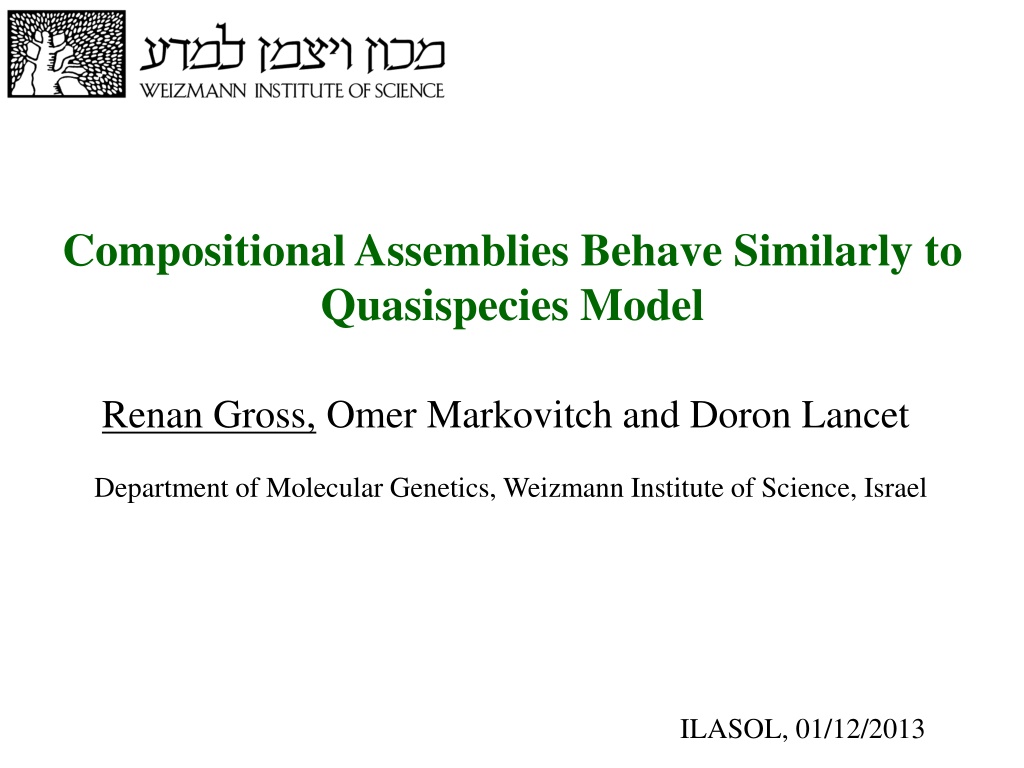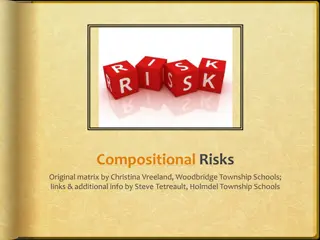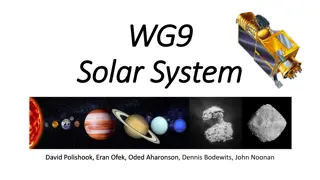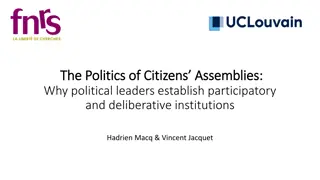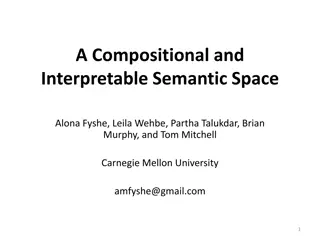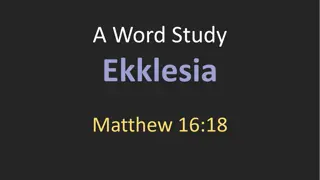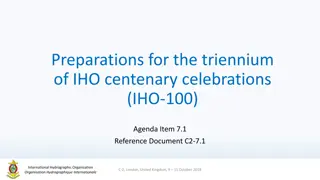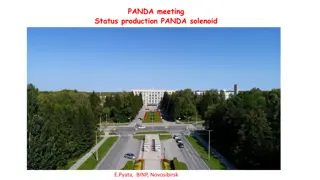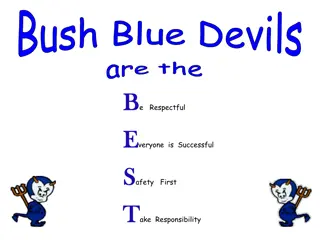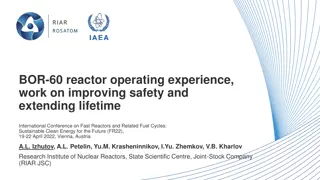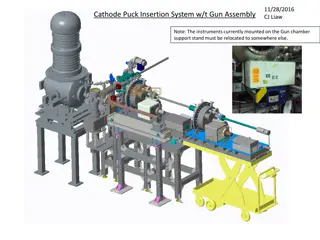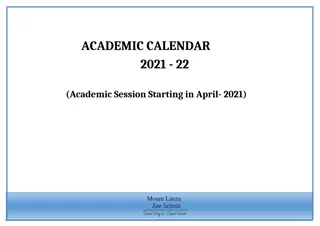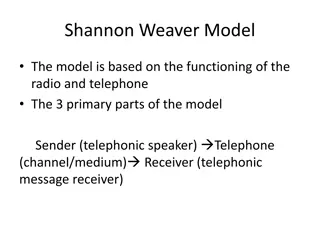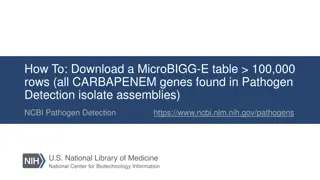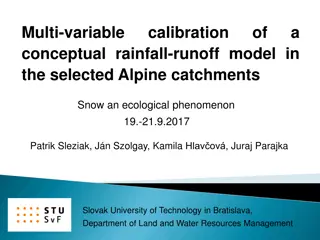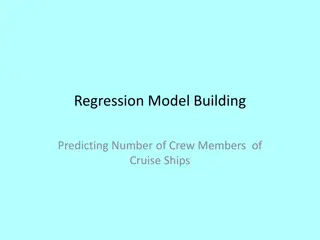Understanding Compositional Assemblies and Quasispecies Model
Compositional assemblies exhibit behavior similar to the quasispecies model, as explored by Renan Gross, Omer Markovitch, and Doron Lancet at the Weizmann Institute of Science. This model provides insight into population dynamics and the replication processes of genotypes within environments, shedding light on essential concepts for understanding the origins of life through error-prone replication and mutation-selection balance.
Download Presentation

Please find below an Image/Link to download the presentation.
The content on the website is provided AS IS for your information and personal use only. It may not be sold, licensed, or shared on other websites without obtaining consent from the author. Download presentation by click this link. If you encounter any issues during the download, it is possible that the publisher has removed the file from their server.
E N D
Presentation Transcript
Compositional Assemblies Behave Similarly to Quasispecies Model Renan Gross, Omer Markovitch and Doron Lancet Department of Molecular Genetics, Weizmann Institute of Science, Israel ILASOL, 01/12/2013
Outline Main result: populations of the compositional assemblies of the GARD model behave in a way that is similar to that predicted by quasispecies theory. Our plan today: An overview of Quasispecies An overview of GARD Results 2
Introduction Quasispecies are a cloud of genotypes that appear in a population at mutation-selection balance. (J.J Bull et al, PLoS 2005) - Theoretical model (equations and assumptions), with experimental support by RNA viruses. - Such dynamics are needed when mutation rates are high. - Early life is reasoned to have lived near error-catastrophe 3
Introduction Why is this important? Further evidence that compositional inheritance can describe known population dynamics. As early life probably had little error correction, quasispecies applies to models for the origin of life. If complete correspondence between GARD and quasispecies model is achieved, we can move to a higher level of abstraction. 4
Quasispecies model Basically a population model n different genotypes / identities Their relative concentration in the environment is denoted by the fraction xi. Goal: To find out how xi behave as a function of time. Reactor ? ??= 1 ?=1 5
Quasispecies model Each one replicates at a certain rate how many offspring it has per unit time. Some replicate faster than others. This is called the replication rate, denoted Ai. 6
Quasispecies model However, replication is not exact. Sometimes, the offspring is of another genotype. The chance that a genotype j replicates into genotype i is denoted Qij. Q11 = 0.5 Q21 = 0.2 Q31 = 0.2 Q41 = 0.1 7
Quasispecies model We can put everything in a matrix, called the transition matrix, Q. From ?.? 0.2 0.2 0.1 0.1 ?.? 0.2 0.2 0 0 ? 0 0.7 0.2 0 ?.? To The main diagonal is faithful self replication. 8
Quasispecies model Under constant population assumptions, the transition matrix Q and the replication rates A are all that are needed in order to find out the concentration dynamics. The Eigen equation (after Manfred Eigen): ??? ??= ????? ? ? ??+ ??????? ? ? Where E is the average excess rate ? ? ? = ???? ?=1 9
Examples: 1 0.001 2 0.1 0.001 0.001 0.01 3 0.001 0.01 0.01 0.01 4 0.1 0.001 0.001 ? = Initial conditions: x1 = 1, all others are 0. 10
Examples: 1 0.001 2 0.1 0.001 0.001 0.01 3 0.001 1 1 1 4 0.1 0.001 0.001 ? = Initial conditions: x1 = 1, all others are 0. 11
The steady state population distribution is called the quasispecies. 12
Quasispecies model This is all theory. What happens for RNA based life forms? The basic model deals with RNA strands of constant length v : There is a single genotype with highest replication rate: the master sequence Single digit replication: 0 q 1 All mutations of the master sequence replicate slower according to the Hamming distance. Effectively, many genotypes are grouped together. Q and A are built only from q and v. q 1 1 0 1-q 13
GARD model (Graded Autocatalysis Replication Domain) RNA world Lipid world Assemblies / Clusters / Vesicles / Membranes Composition non-covalent bonds DNA / RNA / Polymers Sequence covalent bonds 14 Segre and Lancet, EMBO Reports 1 (2000)
GARD model (Graded Autocatalysis Replication Domain) Homeostatic growth Fission / Split
GARD model (Graded Autocatalysis Replication Domain) Following a single lineage. ng=30; split=1.5; seed=361 Similarity carpet 1000 1 Compositional Similarity 800 0.8 Generation 600 0.6 400 0.4 200 0.2 0 200 400 600 800 1000 Generation Composome (compositional genome): a faithfully replicating composition/assembly. Compotype (composome type): a collection of similar composomes. 16
GARD and Quasispecies Do GARD population dynamics behave like the quasispecies model? What we would like to do: For each assembly, experimentally find out the transition frequencies and replication rates. In other words: find Q and A. 17
GARD and Quasispecies But, wait, isn t it trivial? Shouldn t every replicating-with-errors entity follow the quasispecies dynamics? As we will be seen, the compotype is a master sequence candidate for GARD This is emergent from GARD dynamics, and is hence non-trivial An effect similar to error catastrophe also occurs 18
GARD and Quasispecies Back to finding Q and A: Problem: With 100 different molecule types and maximum assembly size of 100, there are ~4 1058 different assemblies. 19
GARD and Quasispecies Solution: group some assemblies together and treat them as one genotype. We decided to group together by distances from the compotype. NG space (simplified to 2d) 3 Molecule 2 2 1 Compotype 20 Molecule 1
GARD and Quasispecies Each assembly is split and its offspring grown. Q = to where did the assembly split? A = how long did it take the offspring to grow? Offspring Molecule 2 3 2 Random assembly 1 21 Molecule 1
GARD and Quasispecies Example of a transition matrix: <<Data removed from published version>> 22
GARD and Quasispecies There is a constant number of assemblies in a population. Each turn, a single molecule is added. Upon split, the parent as well as a random assembly are replaced with the two children. 23
GARD and Quasispecies The population simulation goes into steady state, concerning the frequencies of compotypes (as shown by O. Markovitch) The distribution of distances from the eigenvector was calculated for the population steady state, and compared with prediction. 24
GARD and Quasispecies <<Data removed from published version>> 25
GARD and Quasispecies <<Data removed from published version>> 26
GARD and Quasispecies Correlations About 0.7 are above 0.8 <<Data removed from published version>> 27
GARD and Quasispecies There is a dependence on the number of compotypes <<Data removed from published version>> 28
GARD and Quasispecies Dynamics <<Data removed from published version>> 29
Error Catastrophe in GARD The GARD equation contains two parameters which dictate how fast molecules flow in and out How do kf and kb affect the population dynamics? n N = ( ) dn ( ) G j = + = 1 1 ... i k N k n i N f i b i ij G dt N 1 j 31
Error Catastrophe in GARD What happens if you lower kf ? Run single lineage simulation with different kf values. <<Data removed from published version>> 32
Error Catastrophe in GARD Since the most common compotype frequency decreases drastically, there is a high increase in drift no composomes. Conclusion: kf and kb affect replication fidelity. 33
Error Catastrophe in GARD What happens in quasispecies model? We obtained Q and A for lower kf values. Two types of results: Seed = 12 Seed = 15 <<Data removed from published version>> 34
Error Catastrophe in GARD <<Data removed from published version>> The difference seems to relate to the size of the compotype. 35
Conclusions GARD constant population models give distance distributions that are similar to those generated by the quasispecies model. GARD replication fidelity shows sensitivity to kf and kb. Low kf results in loss of compotype dominance, just like high single digit error results in loss of master sequence. Compotypes/composomes behave similarly to quasispecies. 36
